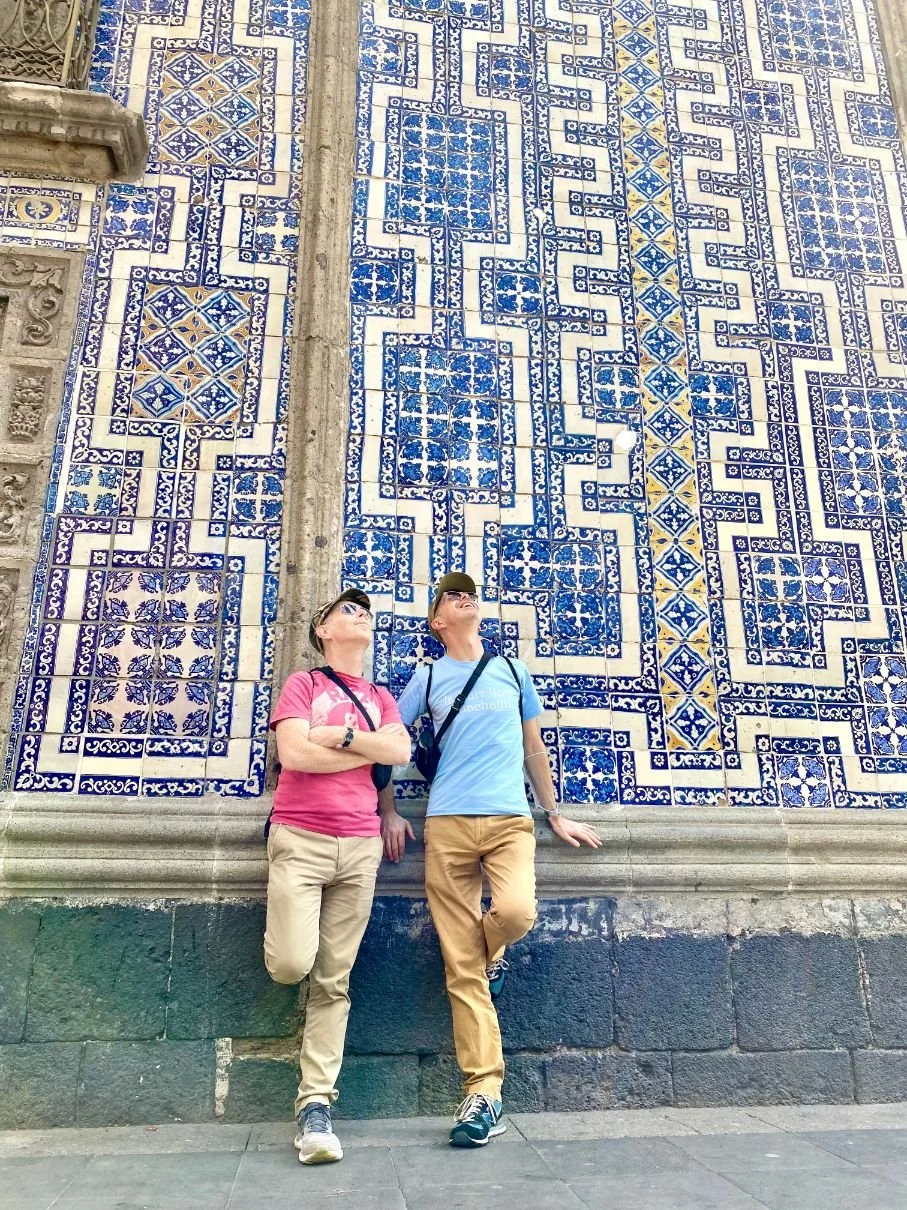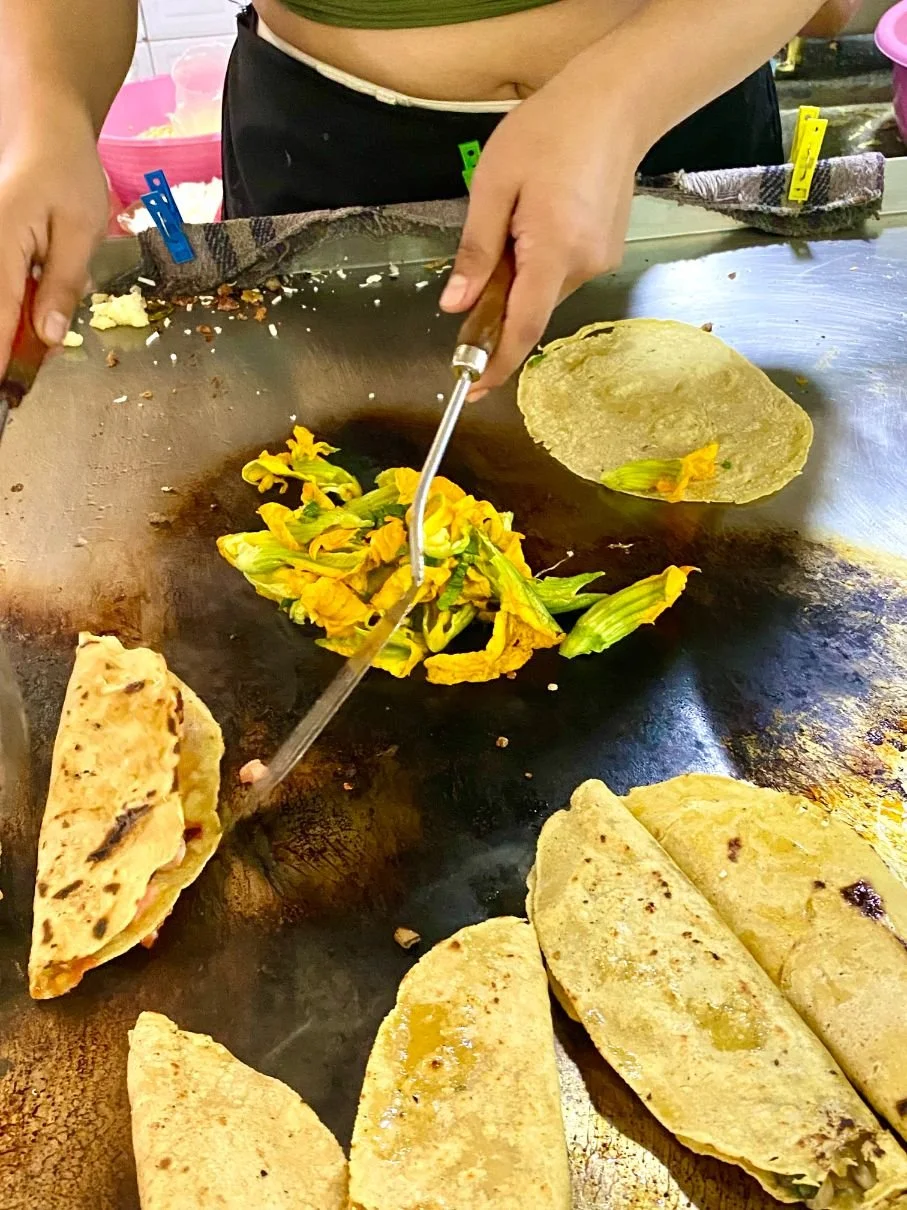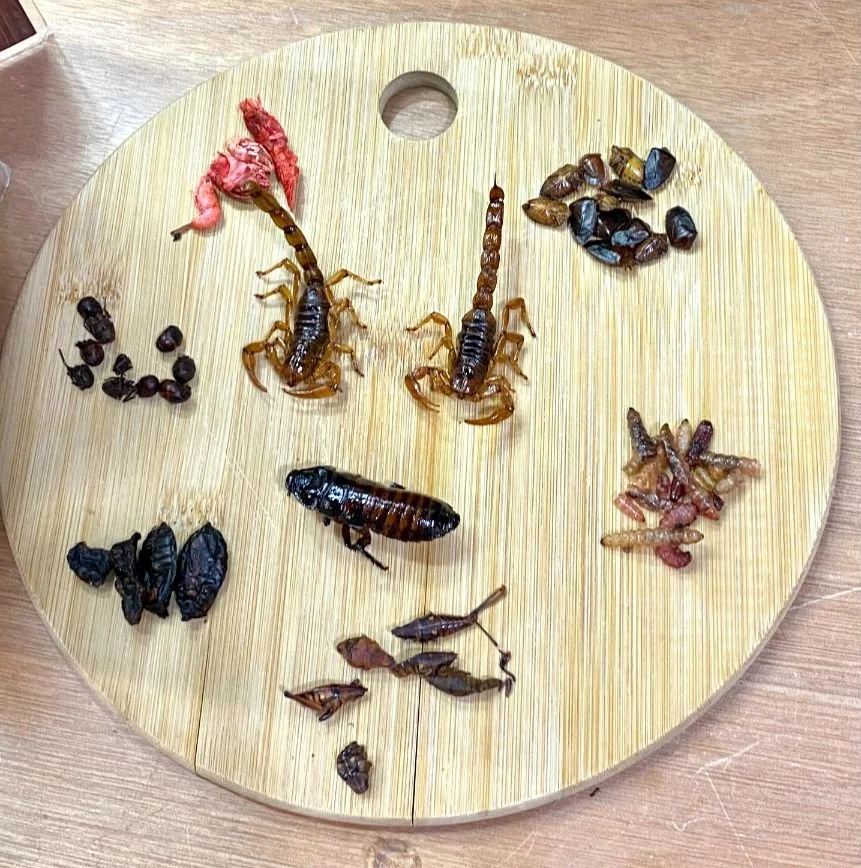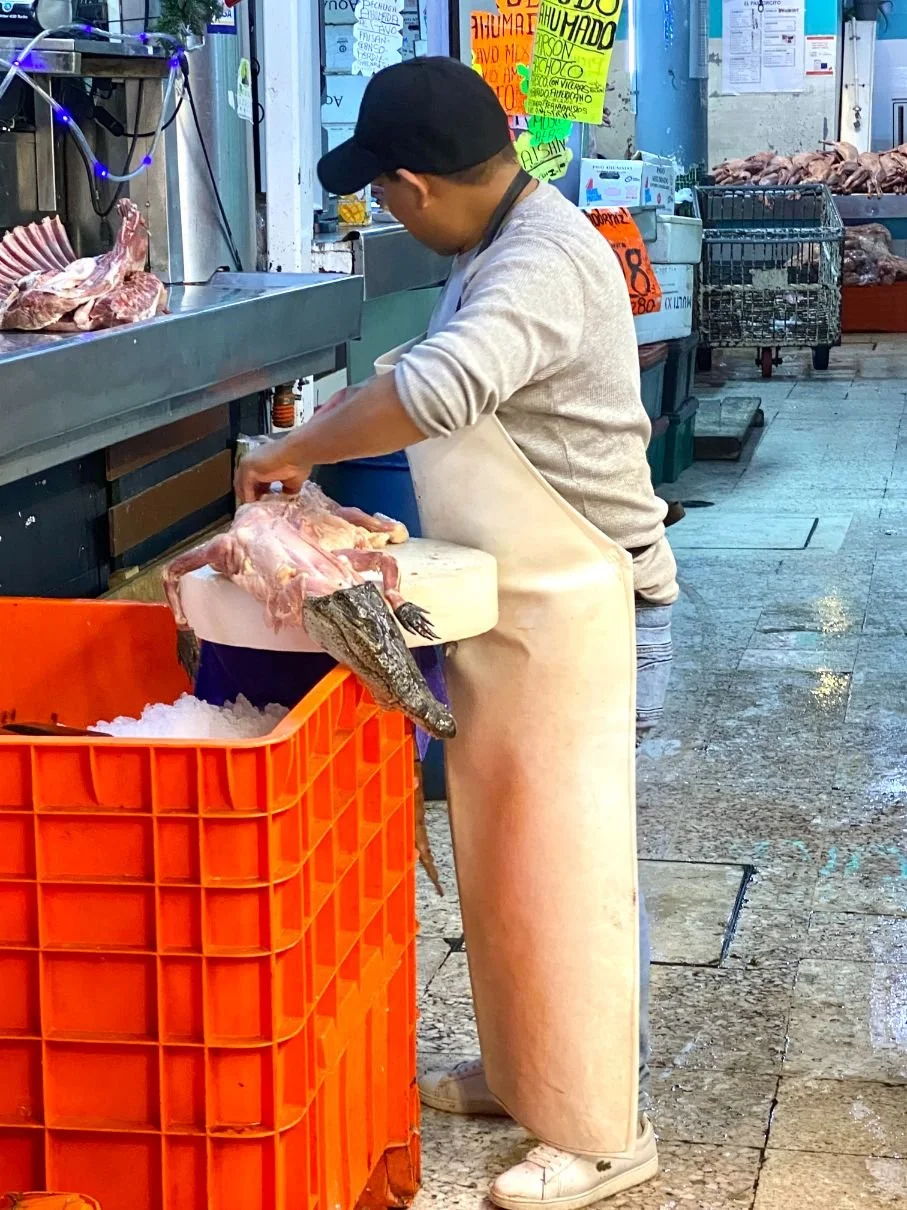Like its cuisine Mexico is endlessly fascinating. This is my sixth visit to one of the most vibrant countries on earth, and ten years to the day since I last came with Coman, for a holiday in Playa Del Carmen. A colourful, exotic, addictive and at times pretty spicy place, at its heart is Mexico City, and having been on a few work trips to this giant metropolis without Coman, this is the first time we are able to explore it together, at the start of our greatest and most epic adventure yet.
Over the coming weeks we’ll be travelling south through Mexico’s varied landscapes, before crossing the border into Belize and then on to Guatemala and Costa Rica. It’s a chance to really explore Central America and immerse ourselves in the food, history, wildlife and culture of the region, whilst also improving our Spanish skills.
And we start with a typical Mexican breakfast of chaquilines - fried tortilla chips with salsas rojo y verdes, sour cream and cheese, reflecting the colours of the giant Mexican flag before us - on the terrace of the Majestic Hotel which overlooks La Plaza de La Constitución, known universally as the Zocalo.
The huge square is bordered on two sides by the Palacio Nacional, which used to be open to the public but is now where the current President decided to live, and the huge Metropolitan cathedral, whose facade is now covered with scaffolding. Our guide for the day - the very entertaining Dora - greets us in the lobby and takes us across the Zocalo to the cathedral where she explains why the restoration is underway.
Mexico City is built upon the original Aztec site of Tenochtitlán, the ancient city which was founded on an island in the middle of a huge lake. The Aztecs realised that to build their city they needed to sink giant pylons into the lake to support their temples, but the Spanish conquerors started ripping down these constructions and filling in the canals of the city to pave it over and build their own colonial city, without paying heed to the ancient technology.
As a result, centuries later, the centre of Mexico City is sinking by up to 3cms a year, which combined with the area’s propensity for earthquakes, means many of the buildings are in danger of collapse. Hence the scaffolding now engulfing the cathedral, and making it less picturesque than the last time I was here.
The interior however is just as spectacular with its ornate altar, huge organ which is being played as we enter, and famous statue of Cristo Negro, one of the best known representations of a black Jesus in Latin America. Next to the cathedral we visit the ruins of the Templo Mayor, the vast central pyramid, which used to stand three times the height of the cathedral but whose stones were used to build the church instead.
We see the remaining carving of the indigenous god Quetzalcoatl, the feathered snake who lived amongst the life-giving corn and was revered as essential to the continuing health of humanity. But of course the Catholics believed snakes were evil and sent by the devil, so destroyed the ancient representations wherever they could.
Dora leads us on through the streets of the historic downtown district, pointing out famous buildings such as the Palacio de Bellas Artes, the grand Oficina de Correos (Post Office) and La Casa de Talavera (House of Tiles) which contains a fabulous-looking restaurant. The architecture is glorious, beautiful Venetian style buildings side by side with Spanish and French facades, with pedestrianised streets and busy boulevards full of shops, bars and restaurants.
After an hour or so of exploring Dora crosses the street to where a car has pulled up and in we get, greeting Raymundo our driver, who’s a quiet and gentle soul, and patiently follows Dora’s instructions wherever we go. Our first stop is Jamaica market, so named as it’s the Spanish word for hibiscus, and pronounced hay’mai’ka. It’s an absolutely enormous space full of fresh fruit and vegetables, flowers, cooking equipment, gifts, food stands and much more where, after wandering through the maze of stalls and displays, we stop for lunch.
Being vegetarians most of the culinary establishments aren’t suitable, but we find a bustling stall where the women make us quesadillas and tostadas in the old foot-operated tortilla press, filled with squash blossoms, mushrooms and cheese along with piquante salsas. They’re absolutely delicious.
The next place we visit, Mercado San Juan, is a little more challenging. In addition to the usual fare it also trades in exotic meats. We see crocodiles being skinned, scorpions dipped in chocolate, fried tarantulas and an array of insect delicacies, various buffalo and other large mammals and most disturbingly a stall selling both lion meat and tiger meat with a huge stuffed lion on top of the fridge. A young English couple are stood in front of it in disbelief and when the owner confirms she does indeed sell lion and produces a huge slab of it from the freezer, the girl starts to cry. We’re pretty appalled too!
Much more palatable is the coffee stall where we drink beans from Veracruz and get chatting to a couple who live in the upper class Roma district of Mexico City. It turns out that when we return to Mexico City at the very end of our travels, our hotel at that time is very near the art gallery that they own. Israel gives me his card and tells us we must come visit them. I pop it in my wallet and promise we’ll look them up.
We drive back downtown passing Parque Alameda, and its memorial to Benito Juarez, the first indigenous President of Mexico, who reformed and unified the country in the 1860s, before finishing at Bar La Opera, a beautiful cantina near the Palacio de Bellas Artes, which is famous for being a revolutionary hotbed, where the overthrow of landowners was planned and still has bullet holes in the ornate ceiling. Dora orders us margaritas and Herradura, her favourite tequila blanco with a shot of spicy tomato juice on the side.
At the bar next to us are a couple who now live in the husband’s native Australia, but are back in Mexico visiting the wife’s mother who is also sat with them, and is obviously a very well-heeled and wealthy lady of a certain age. They’re great company and the mother confesses to being hugely tipsy as she’s now five tequilas in, confirmed by the son-in-law’s raised eyebrows. We all get along famously until the mother rues the fact that many years ago her grandfather had his hacienda (plantation) in Veracruz seized and “we lost everything!”
Her daughter clearly starts nudging her to shut her up, as the bar staff, the musicians, the clientele and most obviously, Dora, are all of indigenous Mexican backgrounds whilst she is more European and imperious. Claiming to have been hard done by here, in the seat of revolution, is a definite no-no. There’s a little back and forth in Spanish between Dora and the mother, and then the husband and wife decide it’s time to take mama home. We’ve all found it quite amusing, including Dora and the couple, but the mother is quite confused as she’s bundled out into the street. We order another tequila. Viva la revolución!!
Saying hasta luego to Dora we wander back to the hotel via La Palacia de Itubirde, now owned by a Mexican bank hosting a wonderful art exhibition. There’s a host of religious paintings in the beautiful old casa but the best is a landscape painted in the mid 19th century by Carlos de Paris entitled Vista de Pico del Orizaba a Citlatépal, which is stunningly beautiful.
Later that evening Coman and I go for dinner at Cafe Tacuba, a traditional establishment opened in 1912, about 15 minutes walk from our hotel. It’s a lovely spot with beautiful stained glass and real character, where musicians loudly serenade the diners and the food is from all corners of the country. We are served chiles rellenos de queso (stuffed peppers) and enchiladas de mole poblana (the famous chocolate chilli sauce from Puebla).
Back at the Zocalo we wander through the crowds still celebrating the new year amongst all the lights and Christmas decoration before retiring for the night. There’s no escaping the jet lag yet…















































